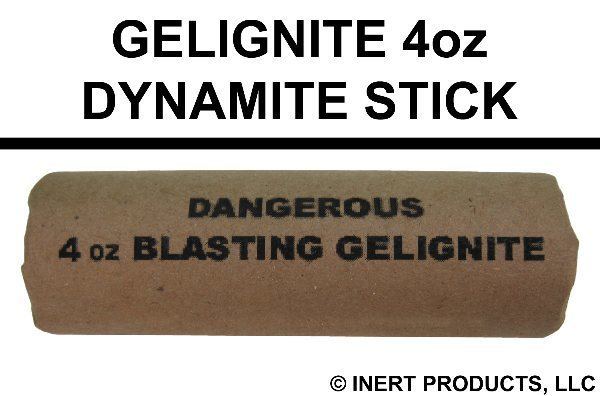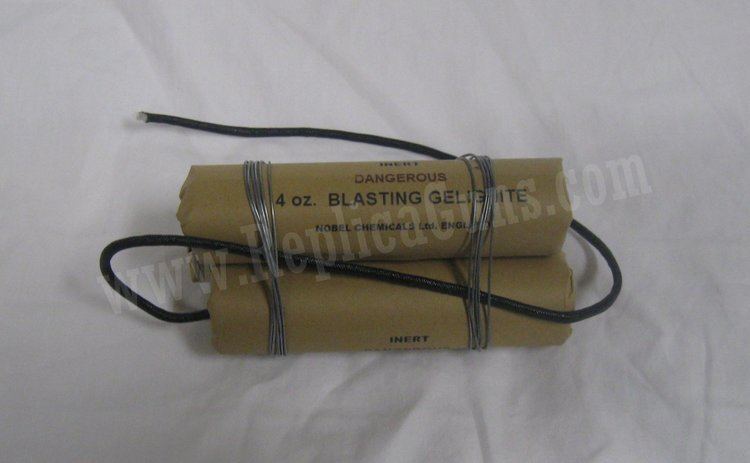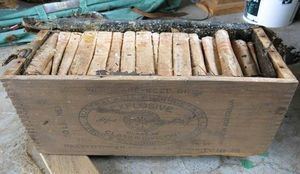 | ||
Gelignite top 5 facts
Gelignite (/ˈdʒɛlɪɡnaɪt/), also known as blasting gelatin or simply jelly, is an explosive material consisting of collodion-cotton (a type of nitrocellulose or gun cotton) dissolved in either nitroglycerine or nitroglycol and mixed with wood pulp and saltpetre (sodium nitrate or potassium nitrate).
Contents

It was invented in 1875 by Swedish chemist Alfred Nobel, who had also invented dynamite. Unlike dynamite, gelignite does not suffer from the dangerous problem of sweating, the leaking of unstable nitroglycerine from the solid matrix. Its composition makes it easily moldable and safe to handle without protection, as long as it is not near anything capable of detonating it. One of the cheapest explosives, it burns slowly and cannot explode without a detonator, so it can be stored safely.
In the United Kingdom, an explosives certificate, issued by the local Chief Officer of Police, is required for possession of gelignite. Due to its widespread civilian use in quarries and mining, it has historically been often used by irregular or paramilitary groups such as the Irish Republican Army and, less frequently, by British loyalists.
Frangex

The 1970s saw Irish Industrial Explosives Limited producing annually 6000 tonnes of Frangex, a commercial gelignite intended for use in mines and quarries. It was produced at Ireland's largest explosives factory in Enfield, County Meath. The Gardaí and the Irish Army patrolled the area, preventing the IRA from gaining direct access. However, indirectly the Provisional Irish Republican Army (PIRA) acquired amounts of the material. 3.5 kilograms (7.7 lb) was found in the possession of Patrick Magee at the time of his arrest and 300 kilograms (660 lb) discovered in a hijacked road tanker in January 1976.

PIRA volunteer, later informer, Sean O'Callaghan estimated that planting 25 pounds (11 kg) of Frangex would kill everyone within a 60-foot (18 m) radius. The Real IRA (RIRA) also acquired Frangex, and, in December 2000, 80 sticks were discovered on a farm in Kilmacow, County Kilkenny, near Waterford.
Accidents involving gelignite

On September 12, 2015, two powerful explosions took place in a restaurant during breakfast hours in Jhabua district of Madhya Pradesh, India. The authority estimated that at least 105 people died in the explosions, more than 100 were injured, some seriously. The first explosion was purportedly caused by a cooking gas cylinder. The ensuing fire was speculated to have set off an unknown quantity of gelignite sticks stored illegally in a nearby building. Several adjacent buildings sustained severe damage.
